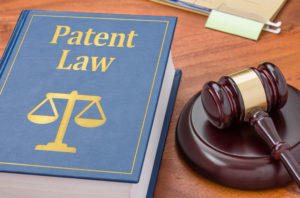Updates in Patent-Eligible Subject Matter
 The Federal Circuit recently issued a much needed development in patentability case law, in Vanda Pharma. Inc. v. West-Ward Pharma. Int’l Ltd.[i] Beginning in 2012, the U.S. Supreme Court upended years of patent law regarding patentable subject matter in biotechnology, relying on earlier case law stating natural laws and natural phenomena were not patent eligible subject matter.[ii] These decisions included a commentary about elements of the patented work that was, in the Court’s opinion, well-understood, routine, conventional activity previously engaged in by researchers in the field, thereby adding an element of obviousness and anticipation analysis to the patent-eligibility inquiry.[iii] A test issued by the Supreme Court, and further clarified by the Federal Circuit, provide that where a claim recites a natural law, the elements of the claim must be considered to determine if the claim as a whole is directed to an application of the recited law. However, since these decisions, significant questions still plague patent examiners, attorneys, and courts regarding the requirements to meet patent eligibility. Most notably, to what constitutes sufficient material to distinguish a claim directed to a natural law versus an application of that law. Since 2014, the U.S. Patent and Trademark Office released at least one new guideline each year to the patent examining corps providing amended instruction on determining patent eligibility.[iv]
The Federal Circuit recently issued a much needed development in patentability case law, in Vanda Pharma. Inc. v. West-Ward Pharma. Int’l Ltd.[i] Beginning in 2012, the U.S. Supreme Court upended years of patent law regarding patentable subject matter in biotechnology, relying on earlier case law stating natural laws and natural phenomena were not patent eligible subject matter.[ii] These decisions included a commentary about elements of the patented work that was, in the Court’s opinion, well-understood, routine, conventional activity previously engaged in by researchers in the field, thereby adding an element of obviousness and anticipation analysis to the patent-eligibility inquiry.[iii] A test issued by the Supreme Court, and further clarified by the Federal Circuit, provide that where a claim recites a natural law, the elements of the claim must be considered to determine if the claim as a whole is directed to an application of the recited law. However, since these decisions, significant questions still plague patent examiners, attorneys, and courts regarding the requirements to meet patent eligibility. Most notably, to what constitutes sufficient material to distinguish a claim directed to a natural law versus an application of that law. Since 2014, the U.S. Patent and Trademark Office released at least one new guideline each year to the patent examining corps providing amended instruction on determining patent eligibility.[iv]
The Vanda decision notes that some earlier cases were directed to the relationship of drug metabolites and drug dosage, which were subsequently found unpatentable subject matter, as it relates to the metabolism of a drug.[v] Further, adding a limitation requiring administering a drug fails to create a patentable claim, by itself, as such a limitation is simply an instruction to apply the law.[vi] By contrast, in Vanda the claims were applied to treating schizophrenia by administering a dosage of a drug, with the dosage determined in part by testing for a patient’s metabolic activity toward the drug to prevent cardiac complications caused by the drug.[vii] While the drug was known, the particular dosing regimen that was dictated from patient testing was a specific application of a natural relationship, making it patent eligible. [viii]
The Vanda decision should help clarify some requirements for the biotechnology community. For years, the medical community. Including researchers and physicians, have been championing personalized medicine, where treatments and dosing regimens are tailored to a patient in the hope of maximizing positive outcomes and limit side effects. But, the medical diagnostics, such as biomarkers, needed for such personalized medicine must be carefully tested to ensure the work supports an application of a natural relationship.
[i] Nos. 2016-2707, 2016-2708 (Fed. Cir. April 13, 2018)
[ii] See, Assoc. for Molec. Pathology v. Myriad Genetics, Inc., 569 U.S. 576, 133 S.Ct. 2107, 2116-7 (2013); Mayo Collaborative Svcs. V. Prometheus Labs., Inc., 566 U.S. 66, 132 S.Ct. 1289, 1300 (2012).
[iii] Mayo Collaborative Svcs. v. Prometheus Labs., Inc., 566 U.S. 66, 132 S.Ct. 1289, 1294 (2012).
[iv] See, https://www.uspto.gov/patent/laws-and-regulations/examination-policy/subject-matter-eligibility, last accessed April 20, 2018.
[v] Vanda Pharma. Inc., slip op. at 29-30 (citing Mayo Collaborative Svcs., 566 U.S. 66, 132 S.Ct. 1289 (2012)).
[vi] Id.
[vii] Id. at page 31.
[viii] Id.

